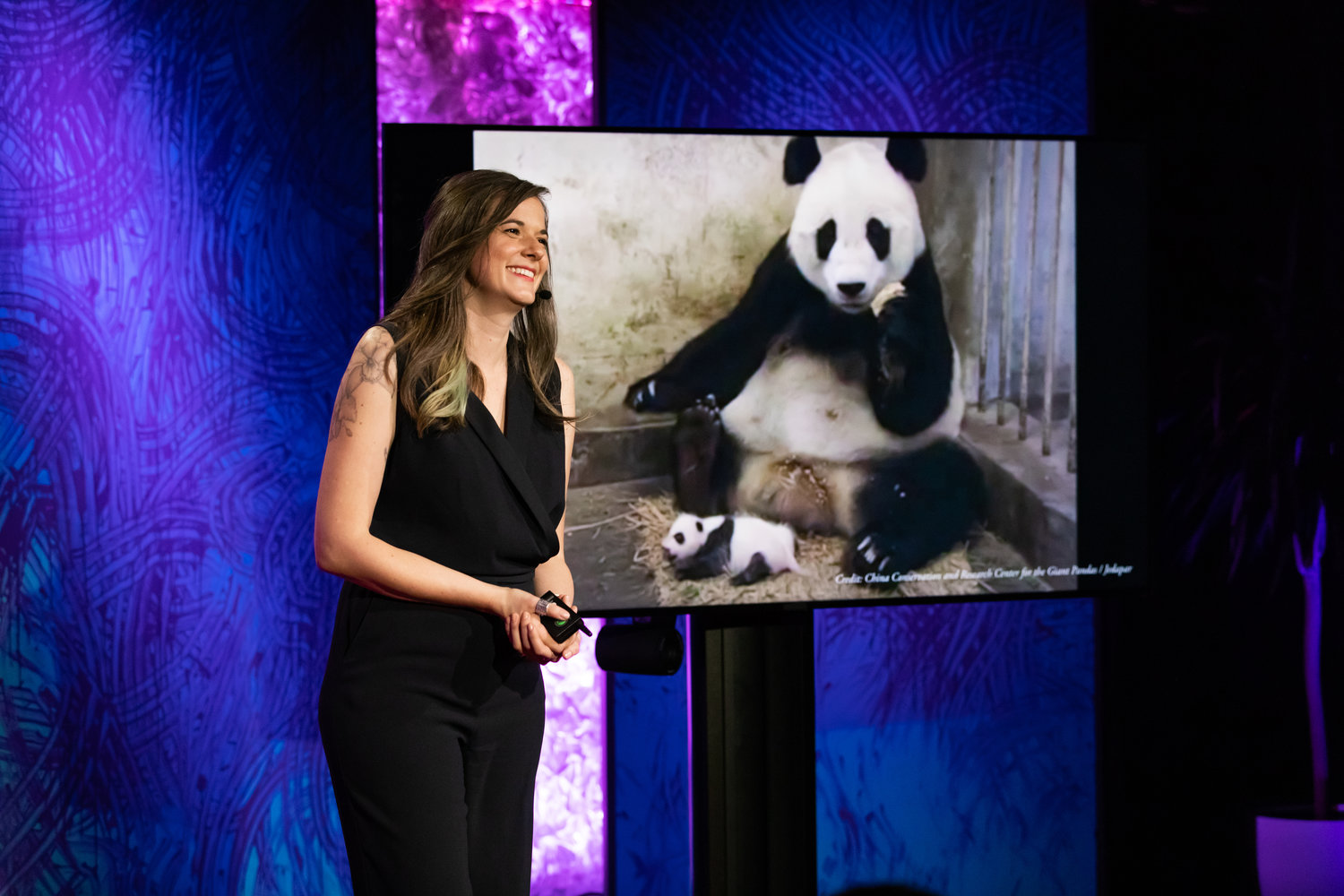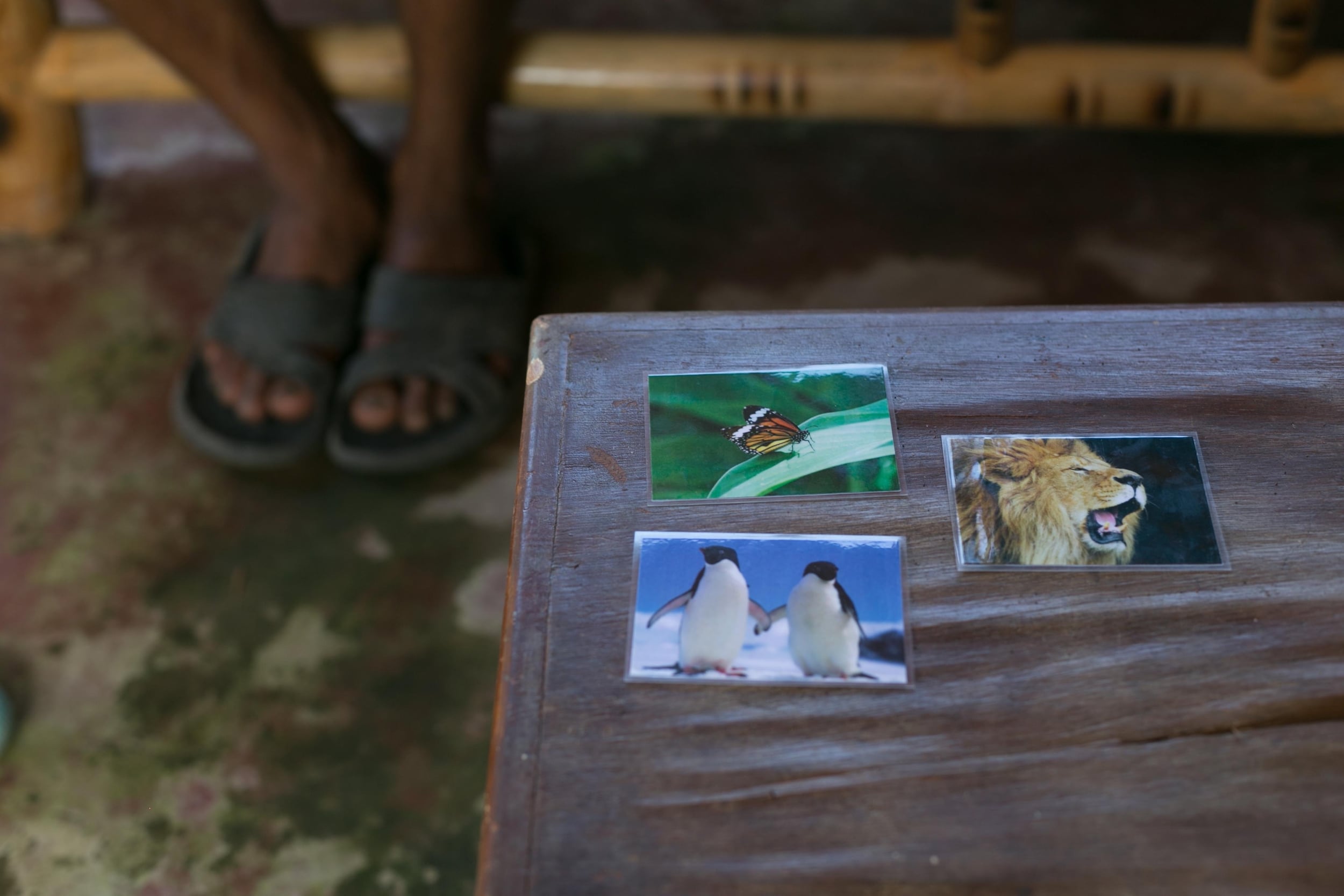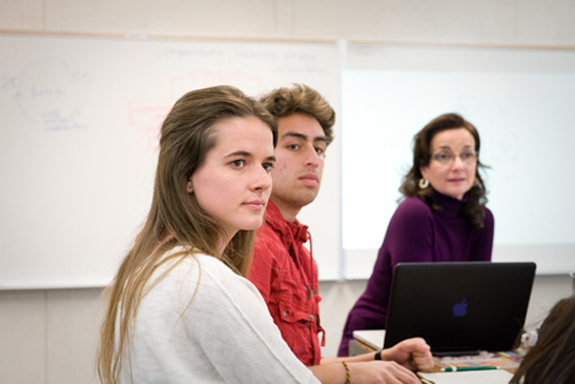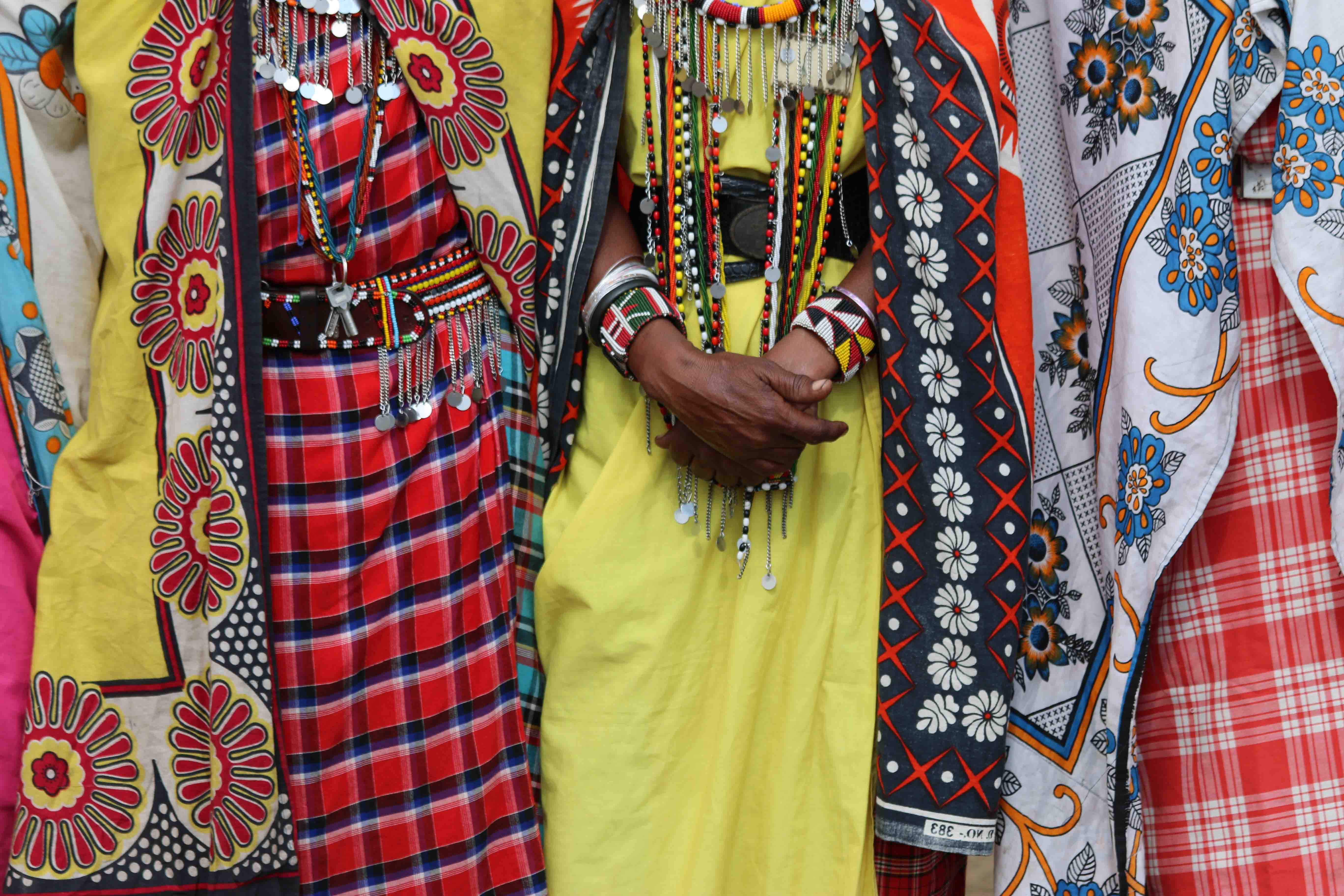Designmatters Media Coordinator, Steven Butler took some time to chat with ArtCenter + Designmatters Alumna, Mariana Prieto about her new venture Design for Wildlife as well as her TED Residency.
What are you most passionate about right now?
Bringing structured innovation to a field that could benefit greatly from it––wildlife conservation.
If you take a look a the biggest challenges in wildlife conservation, like habitat destruction, poaching, human-wildlife conflict, which is when people and animals fight over space and resources, all of these come down to people’s actions in one way or another. And I’ve spent about a year or so doing research and understanding where conservation is today. Who are all the players? What are the challenges that we’re working on? And where does design fit in? I needed to find where design could add the most value in conservation.
Can you explain more about how your design strategy and principles align with this cause?
Another way in which design can be impactful in conservation is through animal parts consumers. So, these are people who are buying ivory, rhino horn, penguin scales, shark fins. And a lot of what is being done today is in awareness campaigns and there’s strengthening laws and policing and et cetera, which is great. We need to keep doing that, but what’s really cool about design is you could take a look at these problems as buyers being potential consumers. Can we design for them instead of against them? Because the illegal wildlife trade can generate anywhere between seven to twenty-three billion dollars in illegal markets every year. And the only reason why the revenue is so big is because the end consumer is willing to spend that much. But design can add value, because if we understand these complex, cultural, historical legacies and the values that surround these objects, then we can curb the purchases somewhere. So not by making a fake version of it because it’s not about matching a product, but it’s about matching the value and the pride in the thing that you’re buying. Design can figure out what that something is and that, I think, is an interesting opportunity to introduce design in a really unique way.
How did you get involved with TED?
The very beginning started at ArtCenter. My co-event host, Eric Molano, and I were really excited about the idea of bringing TEDx to ArtCenter because the college is a place that’s always looking for inspiration and creativity, and TED seemed like a perfect way to bring outside inspiration to students.
Not just from listening to talks, but also from being involved in the creation of the event. We were able to lead a class that had a group of students excited to think creatively about what the event could be and put it together with us. Our dream was that it wouldn’t be just one event, but that we could create something that could become a recurring event for the school. I could not be more thrilled and honored to hear that it has been happening!
What do you find inspiring about TED talks?
TED provides a stage for anybody to become a hero. So before, the world’s stage belonged to politicians, actors, musicians… people that would have access to a world stage that could make them role models and heroes. But TED gave hero status to computer scientists, data analysts, educators, social activists or writers. All of these people that used to do incredible work in the shadows, now get to be role models and heroes to young girls and boys. You have examples of people doing great things for the world and being recognized for it. And so, you have people of many walks of life that are inspired to fight a good fight through these unusual paths.
What was your first TED Talk experience?
ArtCenter faculty member Heidrun Mumper-Drumm recommended me as a speaker for TEDxYouth Caltech. They wanted somebody to talk about design, which I saw as an opportunity to talk about how it’s a problem solving method and a critical way of thinking. The whole talk revolves around this structured process by comparing it to a hostage situation and how you can use design thinking to find freedom from your captors.
How did the experiences of organizing the first TEDXACCD and speaking at TEDxYouth Caltech lead to you becoming a TED Resident?
I went to a few TED events around the world for a few years, and stayed in touch with TEDx just as a way to find inspiration. It was a way of refueling my energy every year, and as a reminder to keep dreaming big and that I wasn’t alone. That the fight was worth fighting, whatever the fight was at the moment.
To be honest, what ultimately led to me applying for the TED Residency is that I’d been working alone for a long time and I was fighting every day to self-motivate, to find partners, to find solutions, to get some traction. It was exhausting to work alone. There were times where I just hit my head against the wall and thought “I’m going to become a dog groomer. I can’t do this anymore.” Then the next day I would dust myself off and go, “No, this is worth it. Okay. Take a shower, get up, and go find a coffee shop. You can do this.” Working alone as a creative is tough.
I applied to the TED Residency because what they were offering was support. It wasn’t just the office space, which was worth its weight in gold. It was having a community. It was having people that were also doing things that were challenging, that were also struggling with the usual “start up” and “let’s save the world” problems, and that you could do brainstorms with, that you just felt like you weren’t climbing that mountain alone. That’s exactly what I needed. I needed a community, not to mention an amazing platform to voice what my work and vision was about.
What is the TED Residency Program?
The TED residency has two cohorts every year. We are the cohort number six. As a resident, you agree to be in the New York office at TED headquarters four days out of the week, and you need to be here every Wednesday to be able to share with the rest of the group what you’ve been working on last week, what you’re working on next week, any asks that you have of the group, and anything that you can contribute to somebody else. It’s very collaborative and supportive.
Throughout the Residency everybody works on their TED talk, which is a hard and rewarding process. You go over hundreds of drafts of your talk and refine it over and over for months. You put hundreds of hours to come up with a powerful 6 minutes worth of words.
Once the residency is over, you still belong to this resident community that’s fascinating, inspiring. I think that’s actually the best part of the experience. It’s not even the part that you’re at TED’s office for a few months, but it’s being a part of this inspiring group afterwards.

Mariana Prieto speaks at TED Residency Salon, Session 1, December 5, 2018 at the TED World Theater, New York, NY. Photo: Ryan Lash / TED
What is your average day like as a TED resident?
Average day, I bike to work which is a highlight. Biking in Manhattan is much better than it sounds! Once I get there, I find my desk under a 5 foot photo of a lion that hangs above me, and settle in for the day. Everybody has an interesting project, and a lot of work to do. And so, it is pretty heads down and we just sit near each other. But if you have questions, if you want to brainstorm, if you need any support, you can walk over to anyone, and talk through things.
Every Wednesday, we have a mandatory meeting where everybody talks about what they’ve done that week and what they’re doing next week. It’s very supportive. Through this meeting you can realize that, okay, half of the cohort is struggling with fundraising, or press, or time management… And then somebody says, “Hey. I know some stuff about this. Let me give a workshop next week.” So, it’s pretty collaborative and can be spontaneous.
We also organize some really fun outings as a group, like one where one of the residents took us on a “learn proper Chinese etiquette at a Chinese restaurant night”. And she is Italian! But an expert in Chinese relations. You never know where this group can take you, and it’s always worthwhile.
What do you think your greatest opportunity is on this platform, and how do you plan to leverage this opportunity?
My overall goal is to create a seamless connection between wildlife and design, and the TED Talk is just one of those steps to get there. It’s been a great writing process to be able to take a complex subject matter and turning it into a six minute explanation. Just the thinking behind the preparation of the talk, even if I never gave it, would still be incredibly valuable.
Design for Wildlife aims to use human centered design to address human wildlife conflict worldwide. Why was it important for you to take this opportunity as a TED resident, as opposed to being in the field, or on the ground actively creating solutions to these problems?
I am at a stage where it’s important for me to meet with organizations, understand their goals and challenges and define the best problems to solve with this process. We need to first make sure that we’re solving the right problems, before jumping into the field and executing on the work. If we solve for the wrong problem we’re all wasting our time.
2018 was about understanding conservation, where it makes sense to introduce design and structured innovation, fundraising for it, and then preparing so that 2019 is execution year. This was perfect timing for the TED Residency. I’m doing a lot of research, business development and fundraising.
What is most misunderstood about human centered design and design thinking?
Within the design community we should be talking about this more often. Because design is an incredibly misunderstood concept for the rest of the world.
It’s not that people are wrong about what they think it is. It’s just that the word “design” now includes too many things. So, somebody hears “designer” and assumes that you’re making clothes, or they assume that you make logos, or they assume that you decorate interiors. None of it is incorrect. It just that the word “design” means so much that it’s come to mean nothing at all.
In my work, design first and foremost, has the responsibility to be a problem-solving methodology. It’s a way to bring structured innovation and creativity to a complex problem, and the way to do that is by understanding people’s behaviors, needs and aspirations.
The mindset of a creative thinker, the structured process, and the craft are all important, but the difference can be confusing and at times complicated to explain. However, it is important to differentiate in order to make sure you are maintaining a high level of quality for all of these aspects. You can have a whole design process to find a great solution, but it falls apart if the execution isn’t up to par. That’s the importance of craft.
What role did ArtCenter and Designmatters play in your career trajectory?
Simply put, I would not be here without ArtCenter and Designmatters. ArtCenter was the place that was open to somebody that didn’t really fit the mold. They were supportive of helping me find a way to make a career and a life for social impact.This was a career path that not many people were doing and not many schools were teaching. It wasn’t entirely clear that there was an actual career to be made out of it at the time.
At ArtCenter I learned that you can dream, but if you don’t quite know exactly what that dream looks like, that’s fine. And that you need to keep fighting for that fuzzy dream, and keep going. It also taught me, at times in the hardest of ways, that sometimes starting over from scratch is not only okay, but even necessary to get better results. As painful as it can be!
ArtCenter has led me to this new world in innovation and wildlife that I didn’t know existed. It also helped me find a strong work ethic. It helped me find my drive and the courage to reach seemingly unreachable goals. I don’t know that I would have the strength and strategy to do all of this without having gone through the ArtCenter experience.
What inspires you outside of art, & design and your work?
That’s a hard question. Everything is so related and can be inspiring. Learning about the world, seeing how other people do things differently, how other people solve problems, other people’s dreams, and how they’ve gotten there. It’s inspiring to see how everything, no matter how trivial, can be inspiring.
That being said, being in a little dingy canoe in the middle of a jungly river or in an expansive savannah surrounded by wild animals may be my favorite, and most inspiring, place in the world.
Mariana Prieto is the founder of Design for Wildlife, a collective of creative talent working to support wildlife organizations on challenges in human-wildlife conflict, donor fatigue, poaching communities and other human-centered issues. She was selected TED Resident for the Fall of 2018 and Spring of 2019. Follow her on Instagram @safarimari__
Check out her recent TEDtalk “Why animals need design” below!



